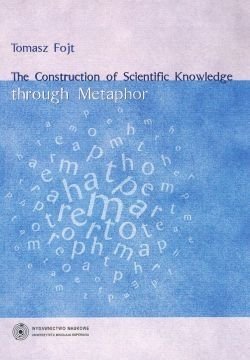The Construction of Scientific Knowledge through Metaphor
That metaphor is used in science is hardly a contentious issue. Extensive literature on the topic testifies to the widespread employment of metaphor in scientific texts. According to the received view, however, metaphor is a periphrastic 'as-if' device which has no bearing on the deliberative content of scientific theories. Metaphorical reasoning is taken to be epiphenomenal, a corollary to which is that metaphorical meaning is, in principle, reducible to equivalent literal meaning (for discussion, see section 5.2.1). Consequently, metaphors are considered ancillary in science and tend to be ascribed a marginal role as heuristic or exegetical tools to be used for pedagogical purposes. Contrary to this restrictive view on the function of metaphor in science, this study seeks to present the role of metaphor as both more significant and versatile.
The aim of the study is to establish the mechanism of conceptual metaphor as operative in the constitution of scientific theories. Implicit in the thesis is the claim that metaphors are not merely linguistic expressions, but they are (primarily) a matter of reasoning. Thus, a prerequisite to an investigation of the role of metaphor in scientific theory articulation is demonstrating that metaphor operates at the level of conceptualisation. Only then can it be legitimately posited as a conceptual instrument of abstract reason. To this end, a framework of cognition is introduced in section IV in which metaphor is characterised naturally as a protective cognitive device whereby the cognitive agent establishes meaningful relationships between concepts and segments of external reality.
Section 1 - Introduction /7
1.1. Aims of the study /9
1.2. The structure of the argument /11
Section 2 - Methodological considerations /15
2.1. Interdisciplinariness /17
2.2. Isomorphism between language and thought /20
2.3. The methodology of converging evidence /22
Section 3 - Science /27
3.1. The nature of science and scientific theories /29
3.2. Science as cognitive activity /46
3.2.1. The possibility of knowledge /46
3.2.2. Ways of worldmaking /49
Section 4 - Cognition /57
4.1. Interactionist approach to cognition /59
4.1.1. Colour perception from the interactionist point of view /60
4.1.2. Categorical perception as interaction /65
4.1.3. The linguistic relativity hypothesis /70
4.1.4. Apparent motion /84
4.1.5. Concluding remarks to section 4.1 /87
4.2. The interactionist model of cognition /89
4.3. Cognition and reality /92
4.4. Metaphorical projection and constraints on projection /98
Section 5 - Metaphor /105
5.1. Ideational view of meaning /107
5.2. Approaches to metaphor /110
5.2.1. The comparison and the substitution views of metaphor /112
5.2.2. Experientialist approach to metaphor /114
5.2.2.1. Cognitive characterisation of metaphor /115
5.2.2.2. The relevance of embodiment for conceptual metaphor /118
5.2.2.3. The role of the invariance hypothesis /129
5.2.3. The roots of the interactionist view of metaphor /139
5.3. Similarity-based metaphor /144
5.4. Similarity-creating metaphor /149
Section 6 - The role of metaphor in science /155
6.1. The functions of similarity-creating metaphor /157
6.2. The functions of similarity-based metaphor /163
6.3. Aptness of metaphor /171
Section 7 - Case studies /175
7.1. Subatomic entities are particles and subatomic entities are waves /177
7.2. Species are classes and species are individuals /193
7.3. Geological time is an arrow and geological time is a cycle /202
7.4. World is a machine and world is an organism /215
Section 8 - Conclusions /241
8.1. Metaphor /243
8.2. Epistemology and science /245
References /251
Index /267
Tomasz Fojt
Powiązane

Aluzja literacka Teoria - interpretacje - konteksty
Anna Skubaczewska-Pniewska, Andrzej Stoff
Poemat dygresyjny Juliusza Słowackiego. Struktura, konteksty, recepcja
Maria Kalinowska, Marcin Leszczyński
Henry James i sztuka auto/biografii
Mirosława Buchholtz
Czytanie przyszłości. Polska fantastyka naukowa dla młodego odbiorcy
Maciej WróblewskiInne z tej kategorii

Za kulisami. Toruńskie spotkania wokół dramatu. Edycja czwarta

(Nie)oczywiste „Ziemie Odzyskane”

Pan Samochodzik i…







